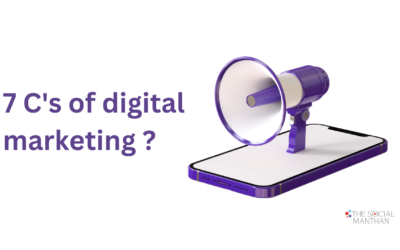In today’s digital landscape, where consumers are bombarded with information from countless sources, standing out in a crowded market can be a daunting challenge. To capture and retain your audience’s attention, it’s crucial to not only create high-quality content but also to present it in a way that is visually engaging, easy to navigate, and aligned with your brand identity. Content design is the art and science of crafting content that not only communicates your message effectively but also captivates your audience.
In this article, we’ll explore content design best practices that will help your brand stand out and make a lasting impression in a crowded market.
1. Prioritize User-Centered Design
At the heart of effective content design is a deep understanding of your audience’s needs, preferences, and behaviors. User-centered design focuses on creating content that resonates with your target audience, ensuring that their experience on your website or platform is seamless and enjoyable.
Why It Matters:
- Enhanced Engagement: When content is designed with the user in mind, it is more likely to engage and retain their attention.
- Better User Experience (UX): A user-centered approach ensures that content is easy to navigate, accessible, and tailored to the audience’s needs.
- Increased Conversions: Content that meets the needs of your audience can lead to higher conversion rates, whether that means more sign-ups, purchases, or inquiries.
Action Steps:
- Conduct Audience Research: Use surveys, interviews, and analytics to gain insights into your audience’s preferences, pain points, and content consumption habits.
- Create User Personas: Develop detailed user personas that represent your target audience segments, and use these personas to guide your content design decisions.
- Test and Iterate: Regularly test your content with real users to gather feedback and make iterative improvements based on their experiences.
2. Use Visual Hierarchy to Guide the Eye
Visual hierarchy is the arrangement of elements in a way that guides the viewer’s eye to the most important parts of your content first. By using size, color, contrast, and positioning strategically, you can ensure that your audience’s attention is drawn to key messages, calls to action (CTAs), and important information.
Why It Matters:
- Improved Readability: A clear visual hierarchy makes content easier to read and understand, reducing cognitive load on the user.
- Focused Attention: By directing the viewer’s eye, you can ensure that they notice and engage with the most critical parts of your content.
- Enhanced Aesthetics: A well-structured visual hierarchy contributes to a clean, professional, and aesthetically pleasing design.
Action Steps:
- Highlight Key Elements: Use larger fonts, bold colors, or prominent placement to draw attention to headlines, CTAs, and important information.
- Group Related Content: Organize related content into sections or groups, using spacing and borders to visually separate them.
- Use Contrast Wisely: Utilize contrast in colors, fonts, and sizes to create visual distinctions between different types of content.
3. Embrace Minimalism and White Space
In a world of information overload, less is often more. Minimalist design, characterized by simplicity and the use of white space, can help your content stand out by making it more digestible and visually appealing.
Why It Matters:
- Clarity and Focus: Minimalist design removes distractions and allows your audience to focus on the core message or action you want them to take.
- Professionalism: A clean, uncluttered design conveys professionalism and attention to detail, enhancing your brand’s credibility.
- Improved User Experience: White space improves readability and helps create a balanced, breathable layout that feels inviting to the user.
Action Steps:
- Simplify Your Design: Remove unnecessary elements that don’t add value or serve a specific purpose in your content.
- Use White Space Strategically: Incorporate ample white space around text, images, and other elements to create a sense of openness and clarity.
- Focus on Key Messages: Limit the amount of information on each page or section, and prioritize the most important messages that align with your goals.
4. Create Visually Engaging Content
Visual content is processed faster by the human brain and is more likely to be remembered than text alone. By incorporating engaging visuals into your content design, you can make your message more compelling and increase its impact.
Why It Matters:
- Higher Engagement: Visuals such as images, infographics, and videos capture attention more effectively than text, leading to higher engagement rates.
- Improved Comprehension: Visual content can help simplify complex information, making it easier for your audience to understand and retain.
- Enhanced Shareability: Content with strong visual elements is more likely to be shared on social media, increasing your reach and visibility.
Action Steps:
- Incorporate High-Quality Images: Use relevant, high-resolution images that complement your content and enhance the overall design.
- Leverage Infographics: Create infographics to present data, statistics, or processes in a visually appealing and easy-to-digest format.
- Utilize Video Content: Incorporate videos to explain concepts, showcase products, or tell your brand’s story in an engaging way.
5. Maintain Consistency with Brand Identity
Consistency in design and messaging is key to building a strong and recognizable brand. Your content design should reflect your brand’s identity, including its colors, fonts, tone, and overall style.
Why It Matters:
- Brand Recognition: Consistent design elements help reinforce your brand’s identity, making it more recognizable and memorable to your audience.
- Trust and Credibility: A cohesive design across all content builds trust with your audience by conveying reliability and professionalism.
- Unified Experience: Consistent branding ensures that your audience has a seamless experience, whether they’re engaging with your website, social media, or marketing materials.
Action Steps:
- Develop Brand Guidelines: Create a comprehensive set of brand guidelines that outline your brand’s colors, fonts, imagery style, and tone of voice.
- Apply Consistently Across Channels: Ensure that all content, from blog posts and social media to email campaigns and landing pages, adheres to your brand guidelines.
- Audit Regularly: Conduct regular audits of your content to ensure that all elements align with your brand identity and make adjustments as needed.
6. Optimize for Mobile Devices
With more users accessing content on mobile devices than ever before, optimizing your content design for mobile is crucial. A mobile-friendly design ensures that your content is accessible, readable, and engaging on all screen sizes.
Why It Matters:
- Reach a Broader Audience: Mobile optimization allows you to reach users who prefer to access content on their smartphones or tablets.
- Improve User Experience: A mobile-friendly design ensures that users have a positive experience, regardless of the device they’re using.
- Boost SEO: Search engines prioritize mobile-friendly websites, which can improve your search rankings and drive more traffic to your site.
Action Steps:
- Use Responsive Design: Implement a responsive design that automatically adjusts your content layout based on the screen size of the device.
- Simplify Navigation: Ensure that menus, buttons, and other interactive elements are easy to use on smaller screens.
- Test Across Devices: Regularly test your content on a variety of devices and screen sizes to identify and fix any usability issues.
7. Incorporate Interactive Elements
Interactive content, such as quizzes, polls, and calculators, engages users by encouraging active participation. By incorporating interactive elements into your content design, you can create a more immersive experience that keeps your audience engaged.
Why It Matters:
- Increased Engagement: Interactive content requires users to actively engage, leading to longer time spent on your site and higher levels of interaction.
- Personalized Experience: Interactive elements can be tailored to individual users, providing a more personalized experience that resonates with their needs and interests.
- Valuable Insights: Interactive content can also provide valuable data and insights into your audience’s preferences, behaviors, and pain points.
Action Steps:
- Add Interactive Quizzes: Create quizzes that align with your content and offer personalized results or recommendations based on user responses.
- Implement Polls and Surveys: Use polls and surveys to gather feedback, opinions, or preferences from your audience, and share the results to foster engagement.
- Create Interactive Infographics: Develop interactive infographics that allow users to explore data or information at their own pace.
Conclusion
Standing out in a crowded market requires more than just great content—it demands exceptional content design that captures attention, communicates your message clearly, and reflects your brand’s identity. By prioritizing user-centered design, leveraging visual hierarchy, embracing minimalism, and incorporating engaging visuals and interactive elements, you can create content that not only stands out but also drives meaningful results for your business.
Remember, content design is an ongoing process that requires continuous testing, refinement, and adaptation to stay ahead of the competition. By following these best practices, you’ll be well-equipped to create content that truly resonates with your audience and helps you achieve your marketing goals.








